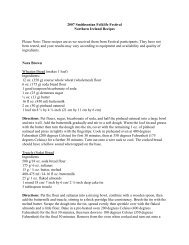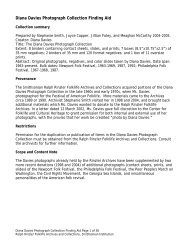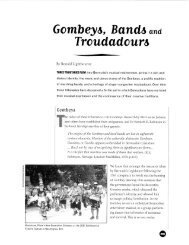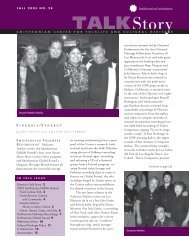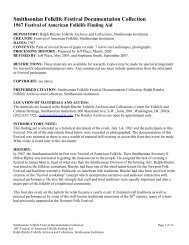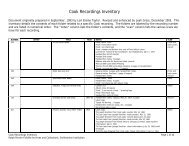Who Owns Traditional Medical Knowledge? - Smithsonian Center ...
Who Owns Traditional Medical Knowledge? - Smithsonian Center ...
Who Owns Traditional Medical Knowledge? - Smithsonian Center ...
You also want an ePaper? Increase the reach of your titles
YUMPU automatically turns print PDFs into web optimized ePapers that Google loves.
172 SITA REDDY<br />
abaricus, now available at US $900 for a set, would enable biopirates to apply for<br />
patents without even having to travel to India, as did earlier ethnobotanists.<br />
Almost on cue, the digital bioprospecting project at the Mayo Clinic College<br />
of Medicine in Rochester, Minnesota, responded to the news of Hortus Malabaricus’<br />
English translation with an announcement. 42 Digital bioprospecting is a hybrid<br />
approach to identifying the therapeutic potential of medicinal plants, which<br />
lies in between ethnobotany, with its reliance on traditional healers, and modern<br />
random high-throughput screening that needs no access to traditional knowledge.<br />
It involves the rigorous comparison of ancient herbal texts with modern<br />
medical databases to identify promising candidates for further examination and<br />
screening. The program’s research wing has already analyzed the other major<br />
seventeenth-century text on the tropical botany of Asia: the Ambonese Herbal<br />
compiled by George Rumphius. Stating that the Hortus Malabaricus was next in<br />
line for analysis the researchers stated that working on the translated text would<br />
cut down the prospecting time significantly; in this case, they would be able to<br />
mine its resources in less than one quarter the time it took for an ethnobotanical<br />
expedition.<br />
This is where we must locate the indigenous Ezhava response that arose in May<br />
2004. Spokespersons for the oldest Ezhava association in southern Kerala, the Ezhava<br />
Social Reform Movement, a largely subnational caste-based coalition in local Indian<br />
politics, used the occasion of their centenary to flood Kerala University with<br />
letters arguing that future publication orders for the translated Hortus Malabaricus,<br />
which is now available only by special order, be restricted to those placed within<br />
state and national borders. Although a weak political group, the movement has<br />
managed nonetheless to articulate an argument in terms borrowed right out of<br />
the 1993 UN Declaration on Rights of Indigenous Peoples to land, territories, and<br />
resources: 43<br />
It is our right to organize over our own biodiversity, our medical knowledge....Withthebiopiracythat<br />
has occurred over the centuries, we don’t<br />
need to repeat the mistakes of history. What he (Itty Achudan) offered<br />
the Dutch colonials was knowledge that had been in our community for<br />
centuries.” 44<br />
Unlike Manilal and Kerala University, who argue that the Hortus Malabaricus relied<br />
on unacknowledged native heritage which now deserves public recognition,<br />
the Ezhavas suggest that they own the text on the grounds that their ancestors<br />
were its original authors. This is what Watkins calls a classic “cultural intranationalist”<br />
claim over heritage: a strategic assertion of rights over knowledge that<br />
the Ezhavas make as “cultural citizens” (based on caste) that does not disturb the<br />
territorial integrity of the nation state. 45<br />
In the Ezhava view, the appropriate response, now that Hortus Malabaricus has<br />
been translated and is in the public domain, is what scholars have called the secrecy<br />
approach in heritage protection: an inward protective turn intended to restrict<br />
the global circulation of information. Another radical nongovernmental



